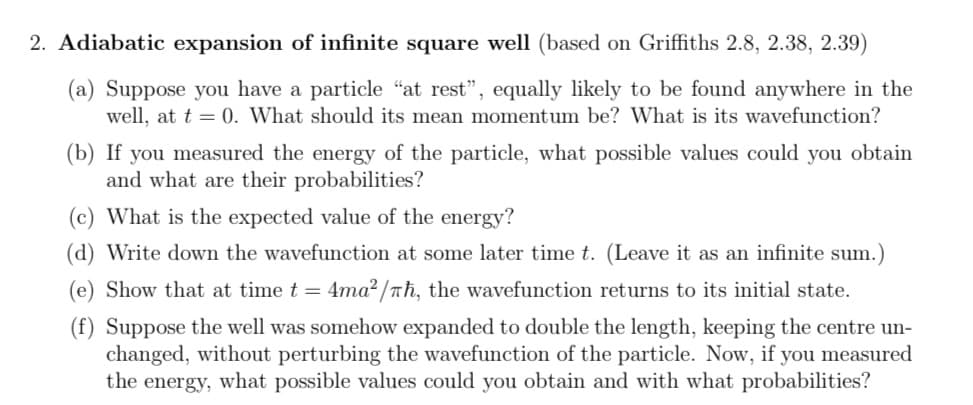(e) Show that at time t = 4ma² /nħ, the wavefunction returns to its initial state. (f) Suppose the well was somehow expanded to double the length, keeping the centre un- changed, without perturbing the wavefunction of the particle. Now, if you measured the energy, what possible values could you obtain and with what probabilities?
(e) Show that at time t = 4ma² /nħ, the wavefunction returns to its initial state. (f) Suppose the well was somehow expanded to double the length, keeping the centre un- changed, without perturbing the wavefunction of the particle. Now, if you measured the energy, what possible values could you obtain and with what probabilities?
Related questions
Question
Sub part e and f

Transcribed Image Text:2. Adiabatic expansion of infinite square well (based on Griffiths 2.8, 2.38, 2.39)
(a) Suppose you have a particle "at rest", equally likely to be found anywhere in the
well, at t = 0. What should its mean momentum be? What is its wavefunction?
(b) If you measured the energy of the particle, what possible values could you obtain
and what are their probabilities?
(c) What is the expected value of the energy?
(d) Write down the wavefunction at some later time t. (Leave it as an infinite sum.)
(e) Show that at time t = 4ma² /nh, the wavefunction returns to its initial state.
(f) Suppose the well was somehow expanded to double the length, keeping the centre un-
changed, without perturbing the wavefunction of the particle. Now, if you measured
the energy, what possible values could you obtain and with what probabilities?
Expert Solution
Step 1
It is required to solve parts e and f as per the request.
Step by step
Solved in 3 steps
